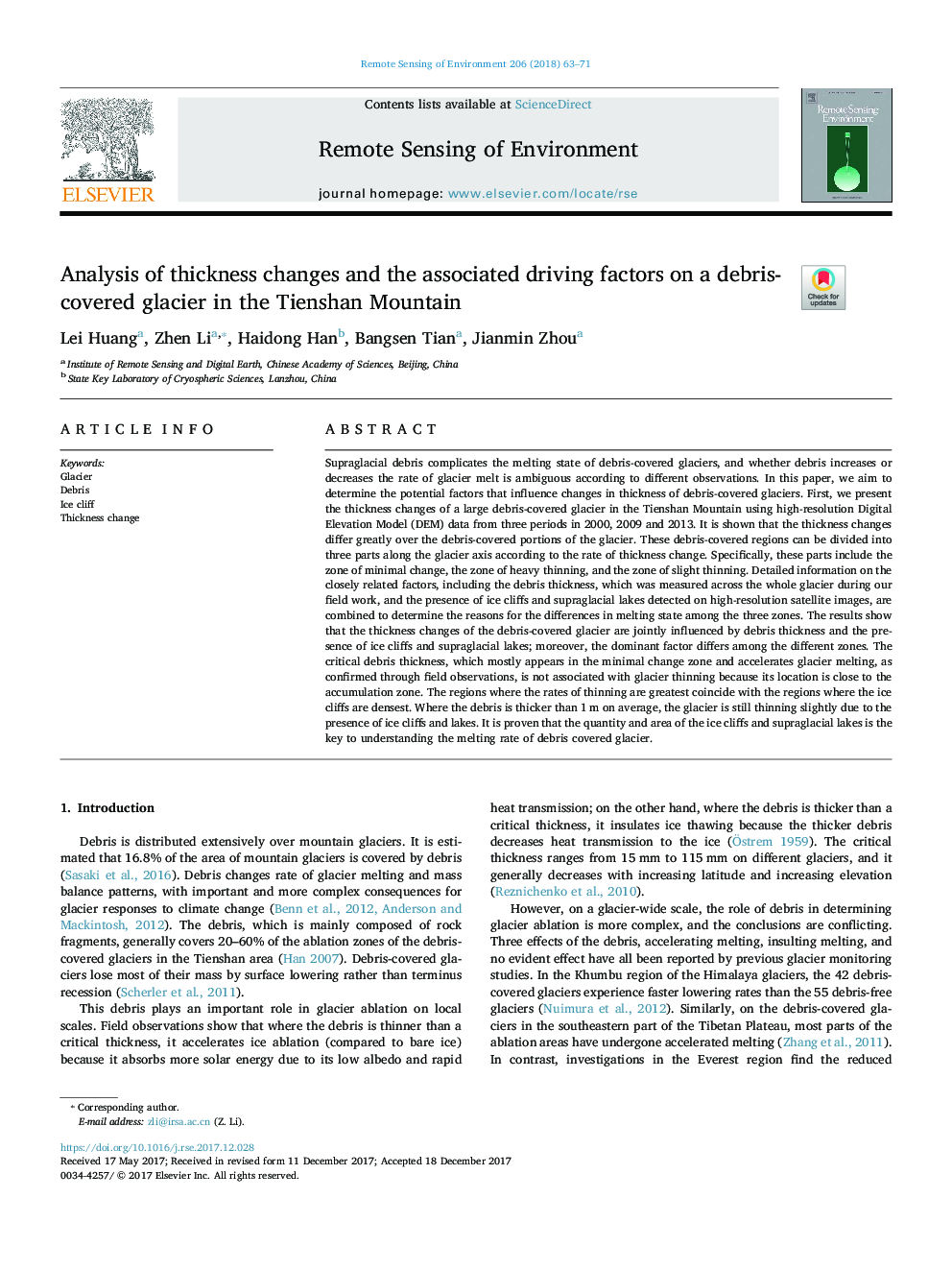| کد مقاله | کد نشریه | سال انتشار | مقاله انگلیسی | نسخه تمام متن |
|---|---|---|---|---|
| 8866720 | 1621194 | 2018 | 9 صفحه PDF | دانلود رایگان |
عنوان انگلیسی مقاله ISI
Analysis of thickness changes and the associated driving factors on a debris-covered glacier in the Tienshan Mountain
دانلود مقاله + سفارش ترجمه
دانلود مقاله ISI انگلیسی
رایگان برای ایرانیان
موضوعات مرتبط
مهندسی و علوم پایه
علوم زمین و سیارات
کامپیوتر در علوم زمین
پیش نمایش صفحه اول مقاله

چکیده انگلیسی
Supraglacial debris complicates the melting state of debris-covered glaciers, and whether debris increases or decreases the rate of glacier melt is ambiguous according to different observations. In this paper, we aim to determine the potential factors that influence changes in thickness of debris-covered glaciers. First, we present the thickness changes of a large debris-covered glacier in the Tienshan Mountain using high-resolution Digital Elevation Model (DEM) data from three periods in 2000, 2009 and 2013. It is shown that the thickness changes differ greatly over the debris-covered portions of the glacier. These debris-covered regions can be divided into three parts along the glacier axis according to the rate of thickness change. Specifically, these parts include the zone of minimal change, the zone of heavy thinning, and the zone of slight thinning. Detailed information on the closely related factors, including the debris thickness, which was measured across the whole glacier during our field work, and the presence of ice cliffs and supraglacial lakes detected on high-resolution satellite images, are combined to determine the reasons for the differences in melting state among the three zones. The results show that the thickness changes of the debris-covered glacier are jointly influenced by debris thickness and the presence of ice cliffs and supraglacial lakes; moreover, the dominant factor differs among the different zones. The critical debris thickness, which mostly appears in the minimal change zone and accelerates glacier melting, as confirmed through field observations, is not associated with glacier thinning because its location is close to the accumulation zone. The regions where the rates of thinning are greatest coincide with the regions where the ice cliffs are densest. Where the debris is thicker than 1Â m on average, the glacier is still thinning slightly due to the presence of ice cliffs and lakes. It is proven that the quantity and area of the ice cliffs and supraglacial lakes is the key to understanding the melting rate of debris covered glacier.
ناشر
Database: Elsevier - ScienceDirect (ساینس دایرکت)
Journal: Remote Sensing of Environment - Volume 206, 1 March 2018, Pages 63-71
Journal: Remote Sensing of Environment - Volume 206, 1 March 2018, Pages 63-71
نویسندگان
Lei Huang, Zhen Li, Haidong Han, Bangsen Tian, Jianmin Zhou,